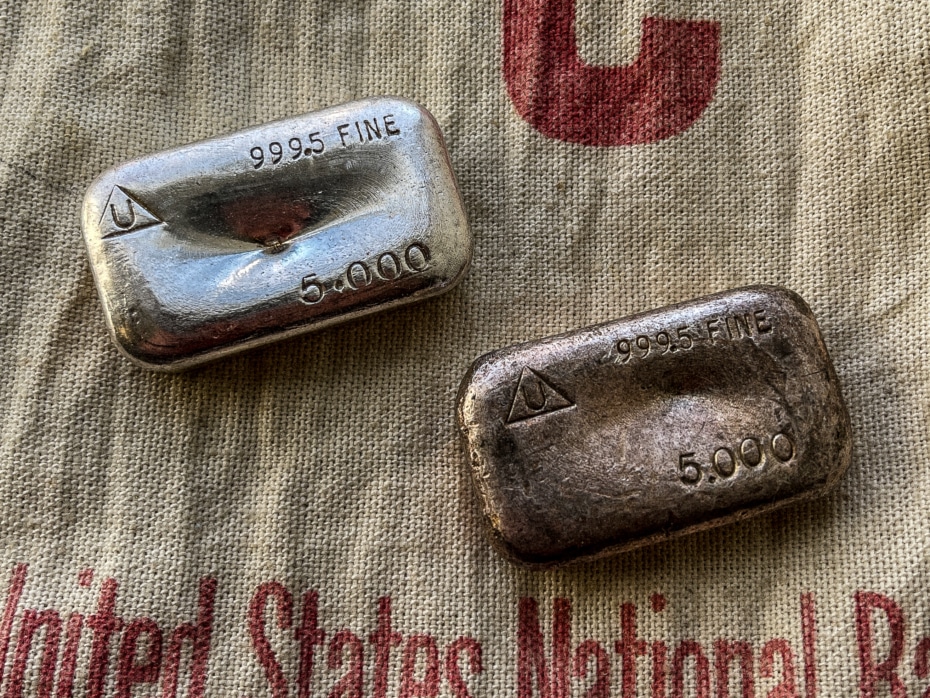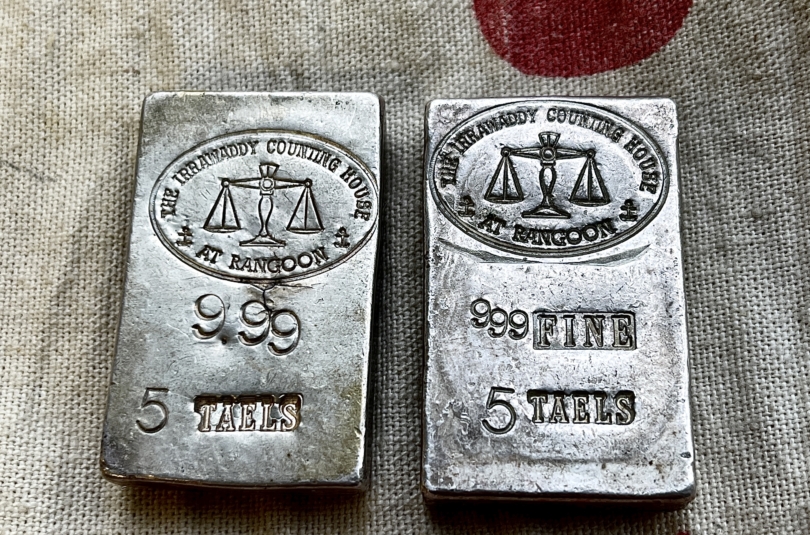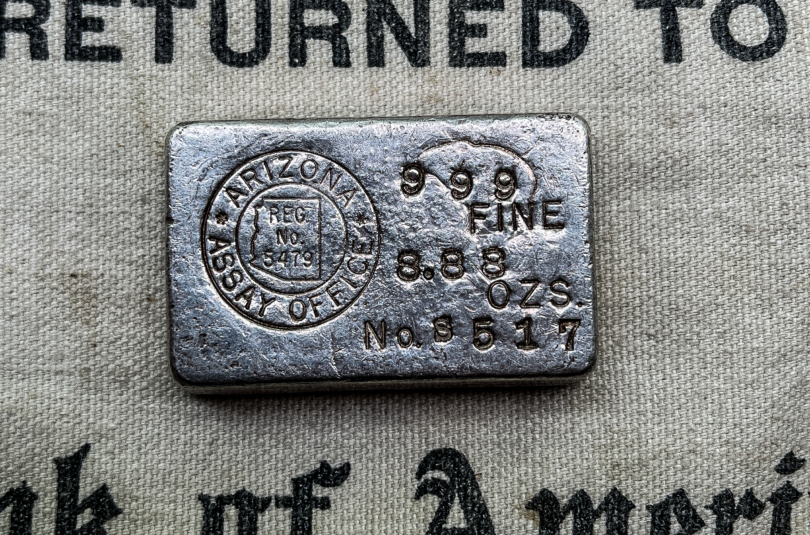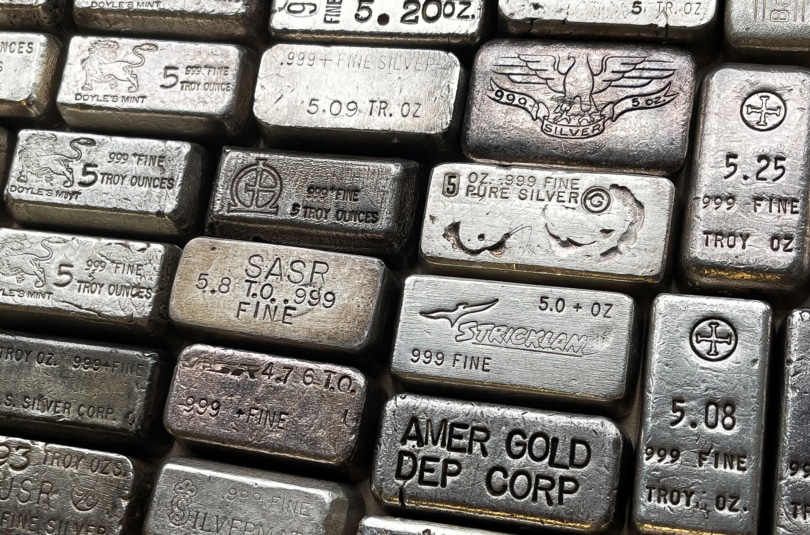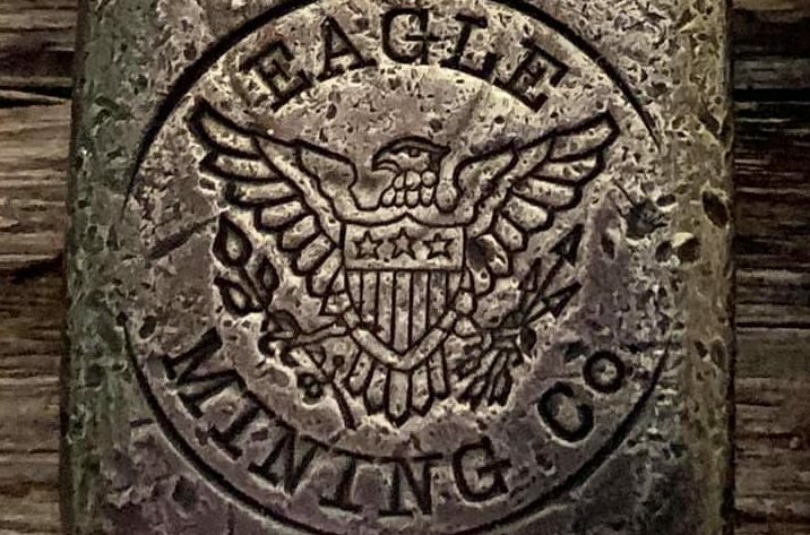How often did you hear stories of family heirlooms and silver pieces losing their shine and luster? Did people immediately assume the silver wasn’t real?
Of course, this story also applies to the poured silver bars, not only luxury silver jewelry. The point is the same-most people believe that fake silver has an Achilles heel and turns black after a while. Supposedly, genuine silver should last for centuries without color changes.
So, to resolve the dilemma and see if the real silver turns black, let’s check what the experts say. Forget your ‘trust me, bro‘ sources; we’re going all scientific.
What Do We Mean by ‘Real’ Silver?
As you probably know, silver played a vital role in many societies and cultures, including Persians, Romans, and Greeks. Silver was crucial for monetary exchange, driving the economies and facilitating trading activities.
Over the centuries, various forms of silver coins and ingots appeared with different contents of the actual precious metal. So, standardization had to happen, and Edward I introduced the sterling silver standard approximately 700 years ago.
Edward’s ideas are still in effect, and sterling silver comprises 92.5% of this precious metal, while the remaining 7.5% belongs to copper. In addition, silver bars adhere to the Good Delivery specifications, with each bar having a serial number, fineness figure, an assay stamp, and the year of manufacture.
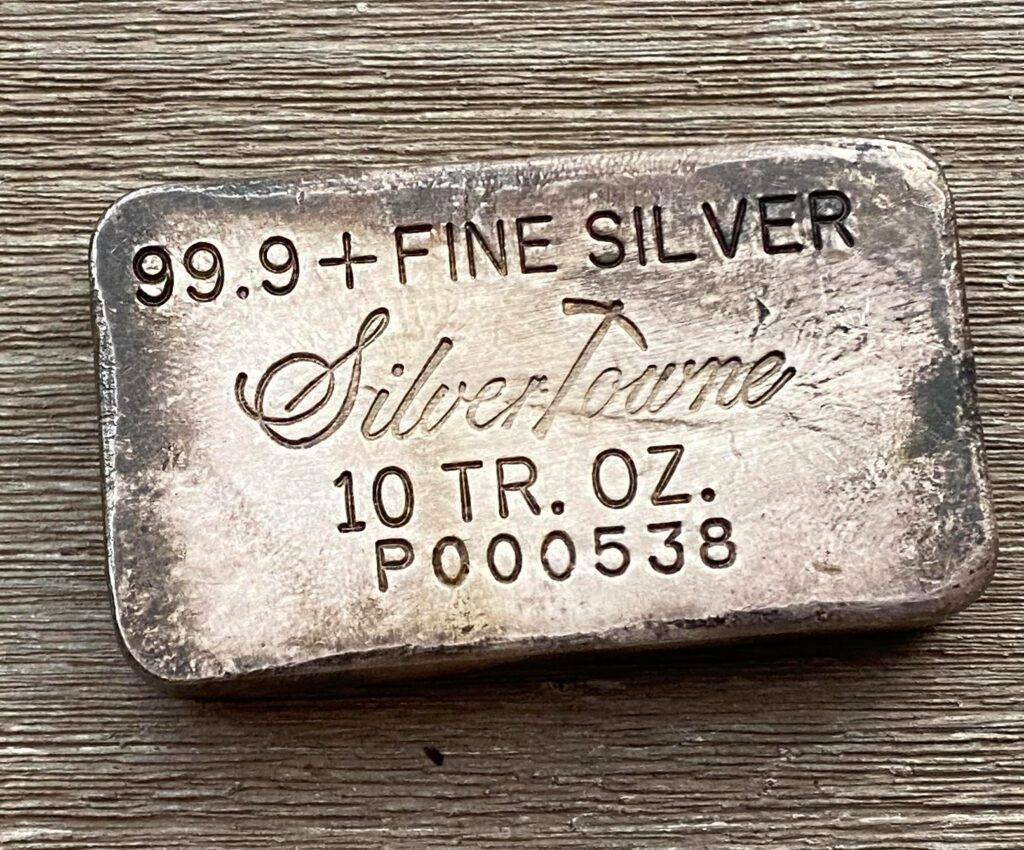
Britannia silver comprises 95.83%, while the investment grade silver is three nines fine, i.e., it features 99.9% of actual silver. These percentages act like a lighthouse and help collectors and enthusiasts separate real silver from fake one. After all, silver is a tangible asset with ongoing demand, doubling as an excellent investment option and a store of value.
Thus, it’s essential to understand the reasons behind the (potential) discoloration of your 10-ounce silver bars.
Why Does Silver Turn Black?
Since poured silver bars are not 100% pure silver and only have 99.9% purity, the chances of discoloration are low but never zero. The reason lies in straightforward chemistry, given that silver forms a thin layer of gray, brown, green or black patina as soon as it comes in contact with sulfur particles in the air.
We’ll look closely at the process in a minute, but for now, the vital thing to remember is that hydrogen sulfide from the air triggers a chemical process known as tarnishing. Tarnished silver bars receive a rustic look and an antique vibe, even when silver is relatively young.
The reaction sometimes results in three-dimensional whiskers on silver inlays in steel. Yet, the typical process for most silver pieces is to change color from brown to black gradually. Of course, the timelines differ because many factors affect the reaction. As we’ll see later, various elements could speed up the process while others can inhibit the chemical response.
Therefore, silver bar collectors and dealers can reduce the tarnishing with proper care of their silver pieces. The same applies to silver jewelry, where the importance of regular cleaning and adequate storage is even more pronounced. Silver bars and their vintage hallmarks look better with an antique vibe, but massive discoloration or artificial toning may diminish the value of any silver piece.
Why Does Silver Turn Green?
Actually, the reason is essentially the same as above. The green discoloration is a result of the chemical reaction with the copper in the silver that occurs once it comes into contact with sulfur-containing materials (think rubber, wool, body oils, etc.). That’s why you might notice some silver jewelry taking on a green hue after wearing it for extended periods…it’s experiencing a chemical reaction from your body oils!
It’s important to understand, that just because a silver bar or silver jewelry is developing a green patina, doesn’t mean it is fake. In fact, it is quite natural for this to happen to bars that are not “pure silver”.
However, if your bar is turning green, and is listed as “.999 Fine Silver”, then something is not right. The green oxidation is from the copper content in the silver. If your .999 bar is turning green, then is probably not actually .999. Several vintage refiners are known for using lower purity metals than they advertised or proclaimed, one example being LS Sons.
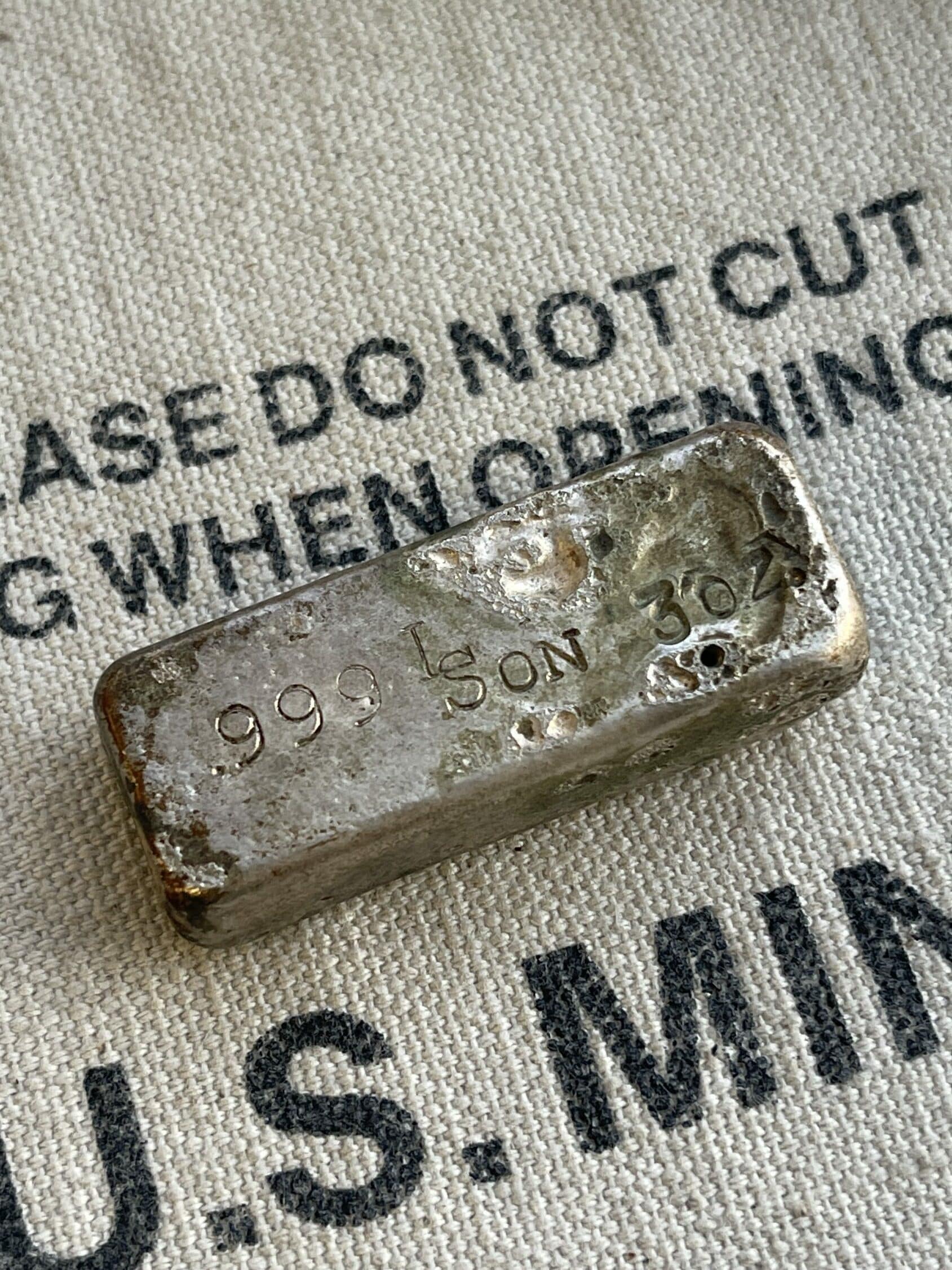
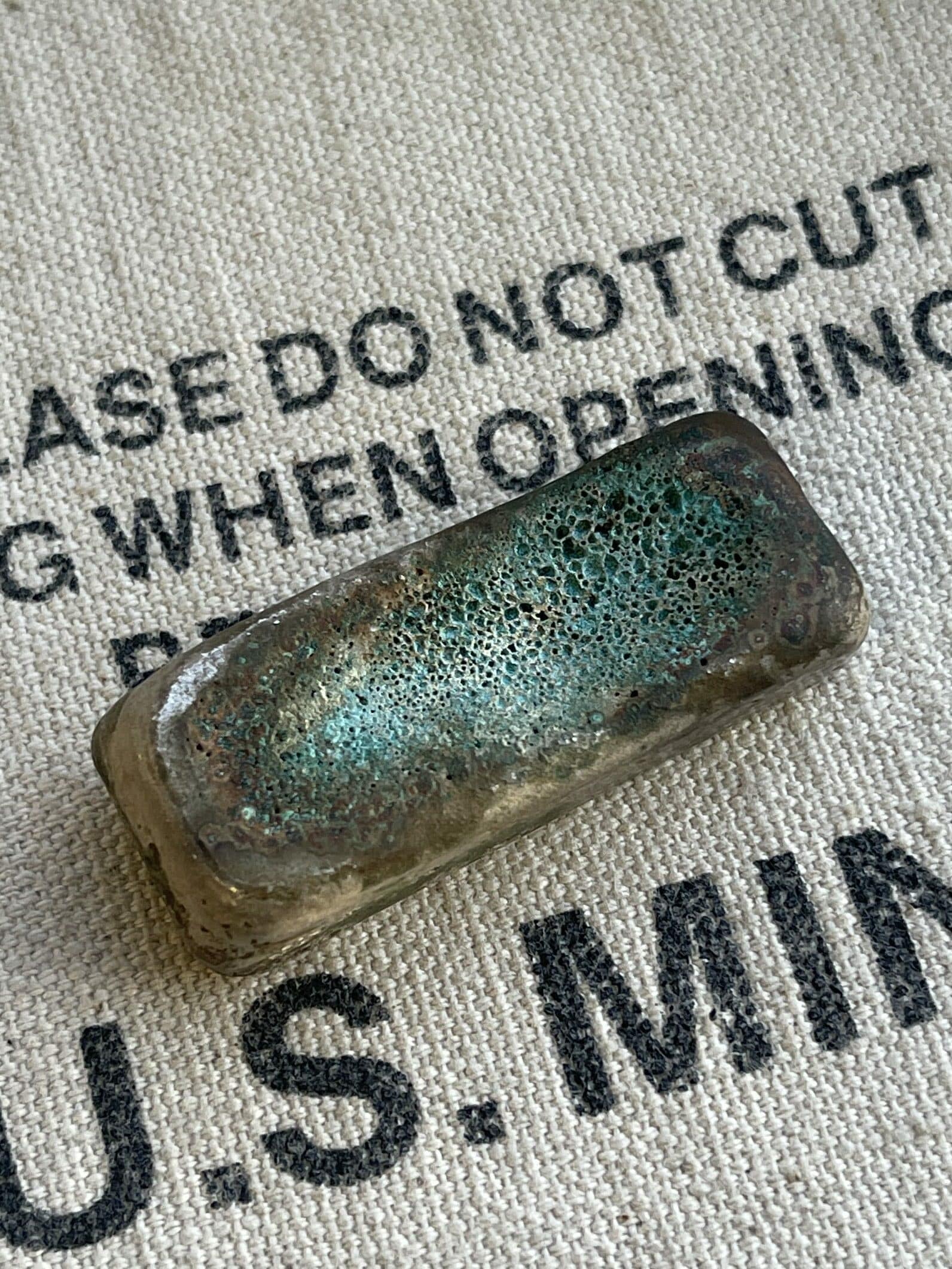
Silver Turning Black or Green: An In-depth Chemical Explanation
Although we promised to get down to brass tacks and explore the theoretical aspects of why real silver turns black, we don’t want to bore you and sound too nerdy. After all, explaining complex matters in straightforward terms is a mark of a skilled teacher.
So, we mentioned that silver reacts with sulfur from the atmosphere to form silver sulfide (Ag2S), a black chemical known as ‘tarnish.’
More precisely, the elemental silver (Ag+1) in your silver bars will transfer two positively charged electrons to fill the valence electron shell and combine with hydrogen sulfide gas (S+2) to form a stable ionic compound called silver sulfide. The air around us contains the sulfide gas in small traces, and the moment this gas comes in contact with silver, we get the following reaction:
2Ag (s) + H2 S (g) → Ag2 S (s) + H2 (g)
Of course, the removal of tarnishing reverses this formula while introducing molecules that break up the ionic compound. For instance, aluminum triggers the appropriate reaction, separating the bond and allowing you to remove the tarnish effectively. Then again, it’s always better to be safe than sorry, so let’s check the best prevention methods for protecting real silver from turning black.
How To Prevent Silver from Turning Black or Tarnishing?
The hydrogen sulfide gas comes into the atmosphere from various sources, including animal carcasses and rotting plants. Yet, even though sulfur is pretty unavoidable, you can reduce the contact by keeping your silver bars in air-tight containers.
For example, zip-lock bags could be the first line of defense, alongside a soft cloth to wrap the silver bars gently if you want to prevent toning. Plus, throw in a couple of silica gel sachets to maximize moisture absorption and significantly reduce RH, the relative humidity. Experienced dealers and collectors recommend keeping the RH below 50% to ensure dry conditions and ward off tarnish.
Our opinion is that you should NEVER attempt to remove natural toning! Of course, regular cleaning may maintain your silver bars and vintage hallmarks in “mint” condition while preserving the rustic look. However, if discoloration appears, there are a few remedies that could save the day.
For instance, a solution of ammonia and warm water should remove corrosion, allowing you to use a polishing cloth to clean the silver. Likewise, a soft toothbrush is a handy option, but never scrub aggressively, or you might damage the hallmarks and other details.
Finally, a self-explanatory precaution is wearing gloves while handling silver bars to prevent contact with acidic skin. The same goes for perfumes, deodorants, hairsprays, or moisturizers. These products can contain abrasive chemicals that will corrode and tarnish the silver, causing severe changes in some cases.
How To Recognize Authentic Silver Bars?
So, how can you separate valuable silver bars from fakes? Oxidation could be an excellent starting point because real silver turns black after contact with sulfur. Then again, well-protected pieces will have little to no discoloration, removing tarnish from the equation altogether.
In that case, a savvy collector will look for the hallmarks to decipher the clues provided by the tiny lettering stamped into the metal. After all, silver enthusiasts have a niche community that takes standardization seriously, and this also applies to the markings.
Namely, each silver bar adhering to the Good Delivery specifications will have three or four symbols stamped on the front-facing side. The serial number and the fineness percentage are among those, together with the assay stamp and the manufacturing year. However, the older the bar, the less likely these practices were in place. So, it could still be authentic…the only way to truly tell is testing the silver.
Remember, we have an extensive collection of silver bars with detailed descriptions and high-resolution pictures to prove each piece’s authenticity. So, if you need help determining the value of a silver bar or learning more about a piece of vintage silver, our library awaits you with open arms.
Can you Artificially Tone Silver
Silver toning is often a desirable trait for bars or jewelry. There are certain collectors that actually prefer dark deep coloration on their vintage silver bars. These bars are often referred to as a “toner”. The dark the bar is, the older it is likely to be. HOWEVER, that isn’t always the case!
Although this process typically happens naturally over time, there are ways to expedite the toning process. There is a bit of controversy over whether this is a legitimate practice. We tend to think it is fine to tone your own bars, if it is a look that you prefer. That being said, there are some ways to get your bars some darker color faster than just waiting for natural toning over the years! But that is a topic for another post.
Summary
And there you have it; a comprehensive analysis of how and why silver turns black. The gist is that oxidation reveals silver’s true nature, making discoloration a sign that you’re dealing with real silver.
In other words, black residue or green patina on your silver bars and ingots shouldn’t raise alarms. Instead, it will signify that the alloy features copper and that a perfectly natural process took place.
In addition, you might want to raise your game and protect the bars from humidity, excess light, cosmetics, or oily skin. As we said, keep the RH values below 50%, and your precious metal pieces will stay shiny for years.
